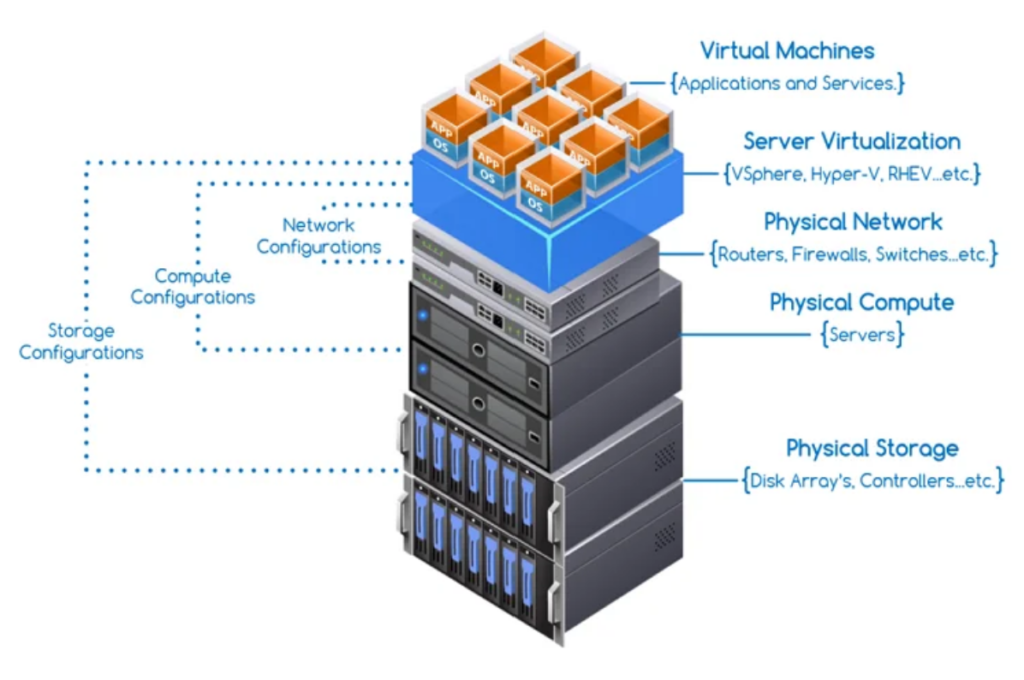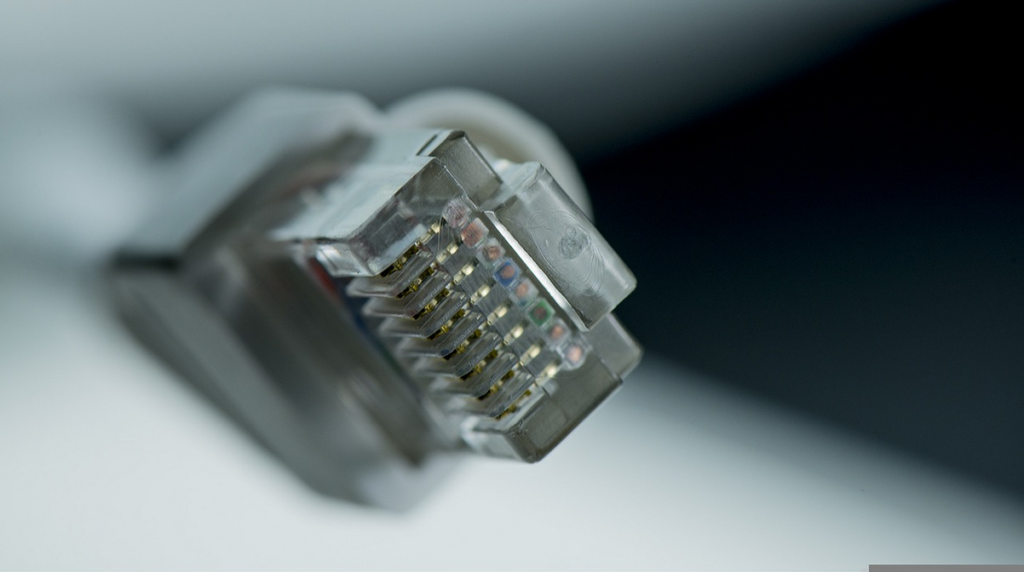IT infrastructure has become the basis of modern business. If it works effectively, then the business can adequately respond to consumer needs, respond flexibly to market changes and develop steadily.
Companies operating without hyper-converged environments are forced to create, integrate and maintain IT infrastructure on their own, which takes resources and often prevents them from doing business directly. Let’s figure out what it is, how it works, and why are companies moving to hyperconvergence today.
What does an HCI look like?
In simple words, hyper-converged infrastructure (HCI) is a software-based architecture that unifies virtualization, computation, and storage resources into one system. This solution combines computing power, storage, and networks using software tools, and they are managed through a common administration console.
HCIs have enabled the creation of manageable interoperable and universal platforms. Thanks to them, companies of different levels were able to more effectively solve a larger volume of tasks.

Hyper-converged infrastructures are possible by a union of virtualization technologies with unified management. Computing, storage, and network resources may all be considered as one resource pool thanks to virtualization. No matter where these resources are physically situated, unified management enables them to be detected, pooled, tiered, and then seamlessly delivered to workloads.
Today, the integration of virtualized equipment and related management software is frequently viewed as a separate appliance that can function in the data center as a single, coherent subsystem or in conjunction with other hyper-converged appliances to quickly and simply deploy and scale an HCI.
How does HCI work?
Hyperconverged infrastructure is built on two fundamental integration and administration concepts that have arisen as a method of tackling two of conventional heterogeneous data centers’ most challenging problems: sub-optimal productivity and dispersed (problematic) system management. HCI’s purpose is to deliver virtualized, extensible computing, storage, and network resources that are discoverable and manageable from a unified platform.
There are several hyperconverged infrastructure solutions and flavors. It is critical to understand the most prevalent factors in HCI technology.
Hardware or software
A hyperconverged infrastructure can be implemented using hardware or software:
- Deployment of equipment. HCI technology began as a hardware platform that combines compute, storage, and occasionally network resources into a single device. Hardware HCI enables a business to simply add new HCI devices as needed without having to worry about management software compatibility and support. Dell VxRail, Nutanix NX, Fujitsu PrimeFlex, Lenovo ThinkAgile, and other hardware HCIs are examples.
- Software deployment. HCI can also be deployed as a software layer that detects, virtualizes, and manages existing hardware components. Businesses may reap the benefits of HCI using a programmed approach without having to spend much on new hardware. HCI software is available for VMware vSAN, Nutanix Acropolis, Microsoft Azure Stack (on-premises Azure), and even OpenStack.
Integrated or disaggregated
A hyperconverged infrastructure can take two different approaches to hardware design:
- Integrated HCI. When an HCI device comprises a balanced mix of computing resources such as CPUs, memory, and storage, an integrated approach is used. Each device is referred to as a node, and an HCI deployment can support a large number of nodes. Integrated HCI hardware provides great performance in a single box.
- Disaggregated HCI. The aim is to deliver distinct resource components in various modules rather than putting the CPU, memory, and storage in one unit – the device. As a result, in a disaggregated HCI hardware configuration, processors and memory are combined in a single computing unit, while storage is housed in a separate storage unit. The many resource modules are linked together in a network.

Deployment
There are 3 basic approaches to incorporating HCI into a standard heterogeneous data center:
- Complete replacement for HCI. In practice, this is possibly the least ideal choice because it involves the most equipment transfer and the biggest potential expense. A new HCI deployment is more likely to be used for new projects, such as creating a second – redundant or distant – data center.
- Parallel deployment of HCI. The HCI platform is installed alongside traditional equipment in an existing data center. This method enables organizations to gradually move workloads to HCI. Equipment that has been displaced can be reused or retired in smaller, more manageable components. Long term, it is expected that HCI will function in combination with traditional infrastructures and that they will coexist easily.
- Deployment of HCI for each specific application. The third method incorporates HCI into the current data center environment. However, rather than migrating existing workloads to new infrastructure, HCI is intended to enable specific new applications or computing tasks, such as creating a new virtual desktop infrastructure or a new big data cluster. Previous workloads are still supported by the current infrastructure.
Why are companies moving to hyperconvergence?
While HCI may not be the perfect solution for all workloads, it can handle more applications and use cases than ever before.
Today’s HCI solutions make use of the significant advancements in software-defined solutions, processor, memory, and storage device design, which are revolutionizing how businesses view and manage resources and workloads. Several examples are as follows:
- HCI with support for container clusters. HCI solutions are now available from vendors like Dell EMC/VMware, Nutanix, and Cisco that are tailored for widespread containerized software like Kubernetes.
- Support for machine learning algorithms and deep learning algorithms. The ability to support a huge volume of scalable containers makes HCI a natural fit for machine learning and AI workloads that require huge amounts of computing resources.
- The advent of streaming data analytics. The HCI system can accept, analyze, and report on metrics and information gathered from a variety of sources in real-time thanks to streaming analytics, and a big data perspective. These analytics may be utilized to forecast upcoming issues or faults and generate insightful business knowledge.

Edge computing has greatly benefited from the use of hyperconverged infrastructure. Organizations need to reconsider how they gather, store and handle enormous volumes of data in the context of the extraordinary growth of IoT devices, sensors, distant sites, and mobile connectivity today. Most often, this demands for the company relocate its data processing and analysis capabilities closer to the data source rather than keeping them in the main data center. HCI products’ simplicity and adaptability make distant deployment and maintenance considerably simpler than with classic IT infrastructures.

